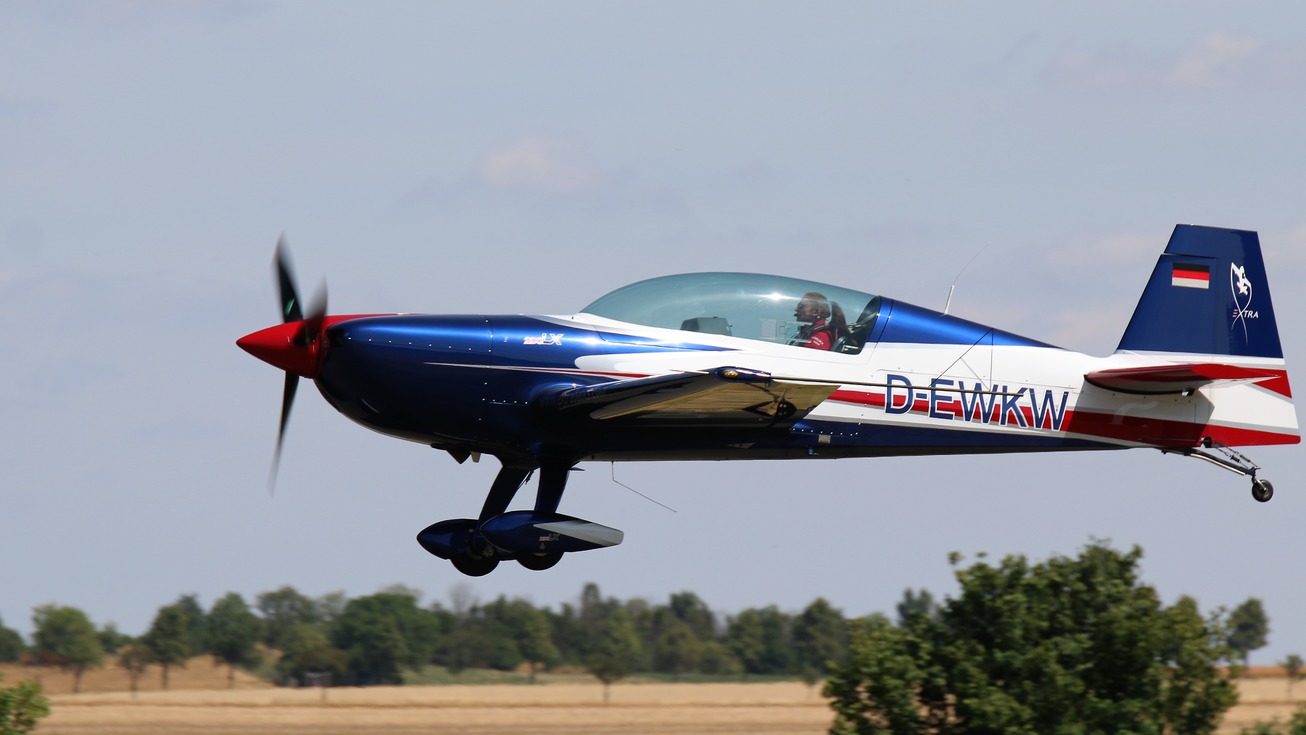The EA300 is a two-seater aircraft suitable for aerobatic flights. It is suitable for competitions in the Unlimited category. The Extra 300 was designed in 1987 by Walter Extra, a German aerobatics pilot, and is built by Extra Flugzeugbau.
The Extra 300 has a fuselage of welded tubular steel, covered with aluminium and fabric. The centre wing has a carbon fibre composite spar and carbon composite covering. The wings have a symmetrical profile, with no angle of attack. This gives the aircraft the same performance when flying straight ahead or upside down.
The aircraft has a Lycoming AEIO-540 injection engine that produces 300 hp. The Extra 300 is built for + or - 10 G with one person on board and ±8 G with two.
The first two-seater Extra 300 made its maiden flight in May 1988, and German type approval followed in May 1990. The single-seater Extra 300S has been flying since 1992.
| Brand | Extra |
| Type | 300 |
| Pilots | 1 |
| Passengers | 1 |
| Maximum Take Off Weight | 820 kg |
| Empty weight | 677 kg |
| Payload | 143 kg |
| Cruising speed | 205 knots (380 km/h) |
| Maximum Speed | 220 knots (407 km/h) |
| Stall speed | 60 knots (111 km/h) |
| Fuel Capacity | 209 liter |
| Span | 8.0 m |
| Height | 7.0 m |
| ICAO code | E300 |
These specifications are intended to give you an idea of the Extra 300. They cannot be used for flight preparation. Often there are many different types of aircraft released with varying specifications and prices. Check the Pilot Operating Handbook (POH) if you want to know the exact values of the aircraft you are going to fly. Your flight instructor will be happy to help you with this.


 Nederlands
Nederlands Deutsch
Deutsch Español
Español Français
Français

